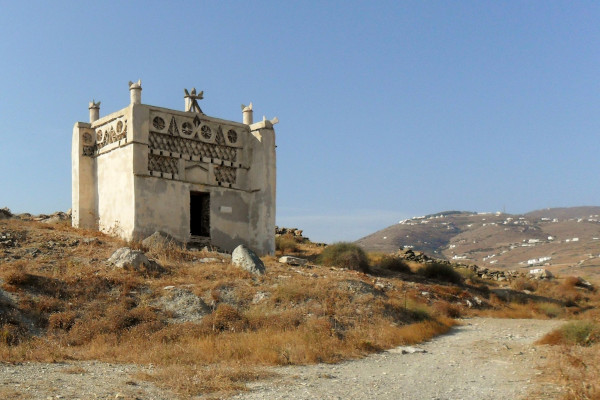The dovecotes of Tinos provide a distinctive and unexpected feature in the countryside landscape of the island, while they can be characterized as one of the "trademarks" of Tinos.
What are the Dovecotes of Tinos?
The Dovecotes of Tinos are imposing stone-built, two-storey buildings that are constructed in open locations like slopes and ravines in order to facilitate the pigeons to fly and to be protected from the winds. It is estimated that today there are about 600 surviving dovecotes on Tinos, while during the past there may have been more than 1000.
Although their interior structure between the dovecotes is almost identical, externally they are different. Each one has its own unique decoration and they are really unexpected works of art in the middle of the natural landscape.
When did the systematic breeding of pigeons began on Tinos island?
It is considered that the systematic breeding of pigeons started during the years of the Venetian rule (1390-1715), while it reached its peak during the years of Ottoman rule. In fact, initially, the Venetian feudal lords had the privilege of ownership since the dovecote was a symbol of noble origin and economic power. Something that changed with the beginning of the Ottoman Empire in 1715.
How do the dovecotes of Tinos look like?
An ordinary dovecote has dimensions of 3 x 3 and a height of 5 meters. They are built in sheltered places and usually near a water source. Their openings, which are decorated, are usually facing the south. They have two floors with the first being used as a warehouse and the second is the pigeons' habitat.
The suitable place for building a dovecote is windless, in order to provide protection, broad and open, in order to facilitate the flight of the pigeons and for sure near a source of water.
What does the pigeon farming offer?
There may not be many active dovecotes today, but in previous centuries, pigeon breeding contributed greatly to the development of the island. The pigeons offered their meat as well as a good fertilizer while in the past it was the main export product of Tinos, contributing to the flourishing of the trade.
A dovecote that accommodates 50 pairs of pigeons can offer up to 200 kg of meat on an annual basis and 500 kg of manure which is considered the best fertilizer for fields and gardens.
